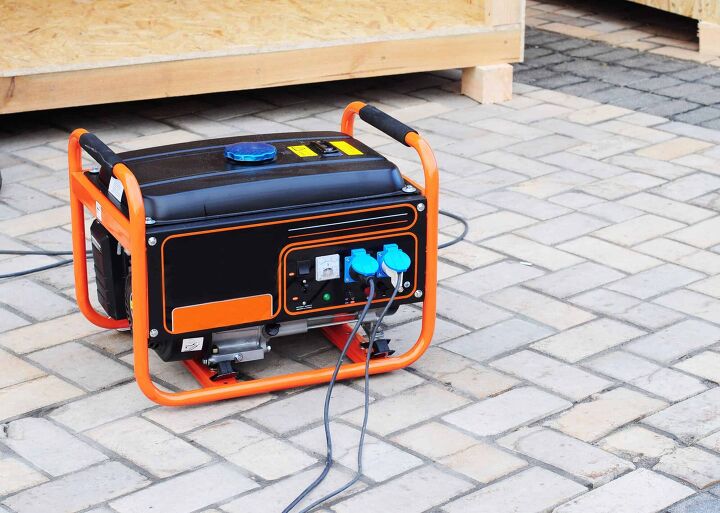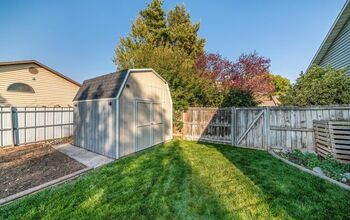How To Connect Portable Generator To A House Without A Transfer Switch

A portable generator can come in handy in countless ways. However, connecting a portable generator to your house without a transfer switch can present its challenges. A transfer switch can divide an electrical load between sources and is often used for backup generators in the event of power outages.
To connect a portable generator to a house without a transfer switch, make sure that your portable generator has a round plug. Gather an interlock kit that is compatible with your generator, 3 sets of wires, and a drill. Drill a hole into a wall leading inside that is far away from the generator so that you can pass wires through it.
Now, you place an inlet box on the outside wall and assemble your conduit. Finally, you can connect the wires from the conduit to the inlet plug one at a time. After that, all that’s left to do is assemble the breaker box, run the wires to it, and place a cover over the breaker box.
Let’s get into the step by step process of connecting a portable generator to a house without a transfer switch.
Do You Need a Generator Installation Service?
Get free, zero-commitment quotes from pro contractors near you.

Can You Connect A Portable Generator To A House Without A Transfer Switch?
Yes, you can, however, using a transfer switch is highly recommended for portable generators. That is because transfer switches can automatically switch on during power outages. Transfer switches are recommended in general, but there are many homeowners that use the interlock device alternative method.
An interlock device is an alternative to transfer switches that make it possible to plug into a service panel directly. Interlock devices are actually somewhat safer than transfer switches in some ways because there is no direct connection at play. It may take some time and work but foregoing a transfer switch in favor of an interlock kit is an excellent choice for connecting your generator.
How To Connect A Portable Generator With Interlock Kit
Before you can connect a portable generator using an interlock kit, there are several things you need to do to prepare. Perhaps the most important part of connecting a portable generator to a house is having the right tools for the job.
The tools that you need to connect the generator to your house include:
- Electrical tape
- Screwdrivers
- Drill
- Pliers
- Conduit
- Interlock kit
You can never be too prepared, and it is always best to have more tools than you think you’ll need. Once you gather your tools, you can begin the process of connecting your portable generator to your house without a transfer switch.
First Things First
Before you get started, look into your local codes. Depending on where you are located, you may not even be allowed to connect a generator without a transfer switch. Not every state or municipality allows for it, and you should by no means bypass a transfer switch if it is illegal where you live.
Assuming that it is legal where you live, look at the plug on your portable generator. On the plug, you will see the amperage of the plug along with some codes. They will help you later on when it comes time to make connections.
The amperage refers to how strong an electric current is. Once you have determined the plug type and amperage, you can get started.
Step 1: Make A Hole
Examine your exterior walls and choose one that you would like to run your wires through. Try to choose a spot where you can keep some distance between the generator and the wires. Once you’ve selected the wall, determine where you want to make a hole.
Keep in mind that the hole that you drill must be able to fit the electrical wires.
Step 2: Place Power Inlet
Make sure that the power inlet box that you buy is waterproof. You will be grateful later when the inlet box doesn’t get fried in its first rain. Position the inlet box so that it is far away from the hole for the wires that you just drilled.
Try to place the inlet so that there is 2-4 feet between it and the hole. Now, it is time to assemble the conduit to make you wires safe.
Step 3: Build The Conduit
Thinwall (EMT) and PVC conduits are quite common, but some local building codes require one type over another. Generally, however, for outside use, metal conduit is the best option and protects the electrical wires quite well. Conduits are essentially PVC or metal fittings joined together by joints that house electrical wires.
To build a conduit, you need to:
- Place a handy box on the wall/secure it with screws
- Measure the space between power inlet and hole in the wall
- Cut the conduit to fit the space
- Install the conduit along the wall leading to handy box
- Secure the conduit with joints and screws
Use glue to secure the conduit if necessary. Now, the conduit is ready for wires to pass through it.
Step 4: Wire The Conduit And Inlet Box
Once your conduit is secure, run the wires through it. In order to connect power to the generator, you’ll need to neatly run wires through the conduit towards the inlet box. Be careful and try to pull one wire through the conduit at a time to make the best use of the tiny space.
You’ll only need to pull one wire all the way through the conduit to connect to the inlet box. The rest of the wires will sit in the conduit. Now, simply make sure that the breaker box has room for wires, attach them to the box, and close it when you are done.
That is all there is to it, and while transfer switches are quite useful, you can still connect a generator to your house without one.
Is It Necessary To Have A Transfer Switch?
Having a transfer switch is mandatory in most states and jurisdictions. You will need to check with your local authorities regarding this matter to see if it’s necessary for you to have one. You are essentially choosing between a manual switch and an automatic one. If you choose manual, you will have to turn the power off to your home before starting the generator to ensure that they don’t start together or run on the same circuit.
By having a transfer switch, this will protect your generator from being able to keep running when the main power comes back on. This can save your generator as well as your appliances that are hooked up to the circuits throughout your home. Also, it will help prevent a possible fire.
What Does It Cost To Install A Transfer Switch?
In the event that you have to install your transfer switch, you will need to purchase it and do it yourself or hire a professional. It costs $500 to $900 for installation and that includes the cost of labor. In order to connect it, you’ll have to plug one end of the cable into the generator and the other end of that same cable to the transfer switch that will reside in a dedicated box just for it.
What Size Of Generator Should You Have To Run Your Entire House?
You will want a generator that’s rated at about 5,000 to 7,500 watts in order to run the most critical household appliances and equipment. This includes things such as your lighting circuits, fridge, and your well pump. Additionally, you’ll be able to charge your cell phone and still be able to use your stove as well.
Related Questions
It is relatively safe to forego a transfer switch for your generator, but it is not recommended, for the most part. However, there is a great risk of electrocution than with using a transfer switch. Also, there is a higher chance for electrical feedback when using extension wires without a transfer switch.
Will my portable generator be able to power the same things without a transfer switch?No, you will not be able to power all of the same things, such as the air conditioner and kitchen appliances, as you would with a transfer switch. Foregoing a transfer switch means that you rely on extension wires which simply are not possible to use with air conditioners and other electrical household devices.
Is there a way to make your power turn back on immediately after going out without a transfer switch?Unfortunately, no there is not. Without a transfer switch, your portable generator will not be able to restore power to your house immediately.
Do You Need a Generator Installation Service?
Get free, zero-commitment quotes from pro contractors near you.

What Did We Learn?
If your state or county codes allow for it, you can connect a portable generator to your house without a transfer switch. However, without a transfer switch, you have an increased risk for electrical fire, and electrocution.
If you can set up a power inlet box, drill a hole to run wires through, and put together a conduit, you can hook up a generator without a transfer switch.

Nick Durante is a professional writer with a primary focus on home improvement. When he is not writing about home improvement or taking on projects around the house, he likes to read and create art. He is always looking towards the newest trends in home improvement.
More by Nick Durante











![10 Best Scroll Saws for 2022 [Ultimate Reviews & Buyer's Guide]](https://cdn-fastly.upgradedhome.com/media/2023/07/31/9070684/10-best-scroll-saws-for-2022-ultimate-reviews-buyer-s-guide.jpg?size=350x220)
![10 Best Electric Lawn Mowers - [2022 Reviews & Top Rated Models]](https://cdn-fastly.upgradedhome.com/media/2023/07/31/9070486/10-best-electric-lawn-mowers-2022-reviews-top-rated-models.jpg?size=350x220)














![10 Most Dangerous Neighborhoods in Baltimore [Updated]](https://cdn-fastly.upgradedhome.com/media/2023/07/31/9075655/10-most-dangerous-neighborhoods-in-baltimore-updated.jpg?size=350x220)